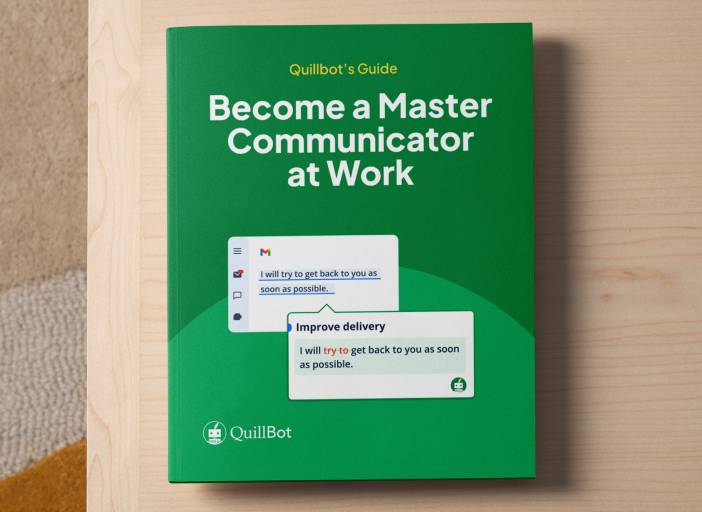How to Make a Portfolio | 6 Tips For a Strong Portfolio
If you’re a creative working in a visual field, you probably already know a lot about how to make a portfolio because you had to create a physical portfolio for a college application or assessment.
But what about an online portfolio? And what does a professional digital portfolio look like if you’re not an artist or designer—a freelance copywriter, marketing specialist, journalist, or consultant, for instance?
What is a portfolio?
A portfolio is a selection of your best work or most successful or interesting projects that showcases your skills and experience in a particular field. A professional portfolio used to be a physical folder or book containing an artist’s sketches, a photographer’s pictures, or a journalist’s articles, for example, but nowadays it’s usually a digital portfolio hosted on an online platform.
How to create a portfolio
The following tips will help you to present your digital portfolio in a way that makes it easy for potential clients or employers to quickly understand what you do and why you’re good at it.
1. Select high-quality, appealing visuals
A digital portfolio is primarily a visual medium. Represent each of the projects you’re showcasing with an attractive, clickable image. If you’re a visual artist, designer, or photographer, this is straightforward. But whatever field you’re working in, think of a way to represent each project visually. If you’re a marketing professional or copywriter, for instance, this could be a screenshot from a campaign, a client’s logo, or a relevant graphic, paired with a short caption.
2. Keep text to a minimum
When someone lands on your portfolio page, they want to quickly scroll through it to get a sense of your capabilities. Think of it as a gallery rather than a resume. Use text sparingly, keeping it to descriptive captions, taglines, short testimonial quotes, navigation links, and a very short bio perhaps. The visuals you’re using to represent each project can then link to dedicated pages containing more information.
3. Choose a clear specialization
Clients often look for specialists rather than generalists. If you work across multiple niches or styles, consider creating separate portfolios tailored to each area of expertise.
For example, a copywriter who’s done a lot of work for clients in the injection molding industry but is also an expert in writing texts for sales emails and freelancers’ websites may decide to create a different portfolio for each of these areas.
One approach is to keep everything under one domain as different pages of a website and share the most relevant link with each prospect.
4. Optimize for search
If your portfolio website is your main online presence, take time to optimize it for search engines. Do some keyword research to identify the words and phrases that potential clients might be typing in when looking for someone with your skills.
Include the keywords you identify naturally in your page titles, headings, image alt texts, and project descriptions. Tools like Google Keyword Planner, Ahrefs’ Keyword Generator, or Semrush’s Keyword Magic Tool can help you identify relevant terms.
5. Make sure it works
There are plenty of platforms for building online portfolios, from portfolio-specific sites to general website builders. Whichever you choose, reliability and usability are key. A broken link or slow-loading site can immediately turn off a potential client or employer.
Read independent reviews before choosing a platform. Look for one that’s mobile-friendly, easy to update, and offers upgrade options like a custom domain name.
6. Use a case study format for project pages
When someone clicks on a project, tell them a story by structuring your detailed project pages like mini case studies:
- What problem was the client trying to solve?
- What solution did you provide?
- How did you approach the work?
- What was the impact or result?
- What did the client say about working with you?
Tell the story from the client’s perspective, and include quotes to add credibility.
Frequently asked questions about how to make a portfolio
- How do I write a portfolio bio?
-
When you’re making your portfolio, if you want to include a portfolio bio on the main page, it only needs to be a sentence or two (much shorter than the average LinkedIn summary).
Something like, “I’m a copywriter and creative strategist with seven years of experience and a degree in journalism,” is probably enough; you don’t want to distract from your main visuals with too much text on the main portfolio page.
You can write a bio that goes into more detail for the “about” page of your online portfolio.
A common approach is to use a tagline for the main page of your digital portfolio and include detailed biographical information on another page—you can use QuillBot’s free tagline generator to help you come up with an appealing tagline.
- What is a portfolio vs resume?
-
A portfolio showcases your best work or projects (nowadays usually on a webpage hosted on an online platform), whereas a resume is a document that summarizes your education and training, work experience, skills, and achievements.
You can use an AI tool like QuillBot’s free AI writer to help you write a resume.
- What is a portfolio for a job?
-
A portfolio for a job (or work/professional portfolio) is a collection of your work or completed projects that showcases what you have to offer a potential employer. In the past, the work was displayed in a physical folder or book, but now it’s typically a webpage hosted on an internet platform.
Why not use QuillBot’s free tagline generator to help you come up with a tagline for your online portfolio?
Cite this Quillbot article
We encourage the use of reliable sources in all types of writing. You can copy and paste the citation or click the "Cite this article" button to automatically add it to our free Citation Generator.
Challenger, T. (2025, August 05). How to Make a Portfolio | 6 Tips For a Strong Portfolio. Quillbot. Retrieved August 11, 2025, from http://qbot.seotoolbuy.com/blog/job-applications/how-to-make-a-portfolio/

